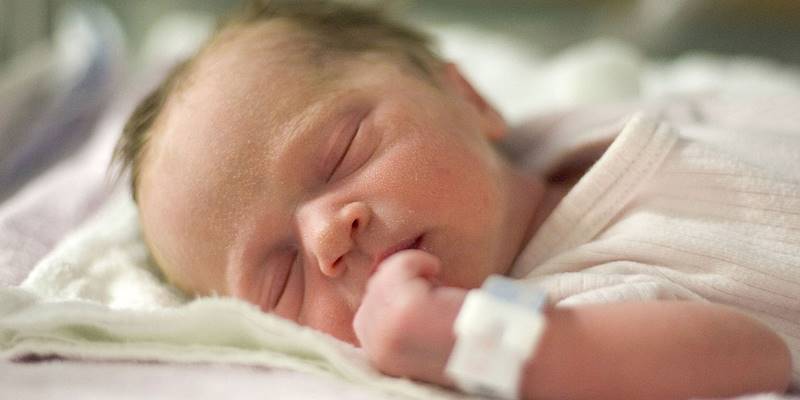Ceftriaxone use is not associated with increased free bilirubin in ... - 2 Minute Medicine

1. In a prospective study of term neonates with sepsis and resolving unconjugated hyperbilirubinemia, ceftriaxone administration did not result in increased free bilirubin levels.
2. Intramuscular ceftriaxone administered in the outpatient setting may be a valuable tool to facilitate earlier hospital discharge for term neonates completing an antibiotic course.
Evidence Rating Level: 2 (Good)
Study Rundown: Sepsis is a common reason for prolonged hospitalization in neonates. Although term infants generally experience complete resolution of symptoms within the first few days of therapy, most remain hospitalized to complete a prolonged intravenous (IV) antibiotic course. An attractive alternative is once daily intramuscular ceftriaxone which would facilitate outpatient therapy. However, ceftriaxone is generally considered to be contraindicated in neonates due to the concern that it causes bilirubin displacement from albumin, which has been seen mainly in in-vitro studies. This prospective study of 27 term neonates with sepsis and resolving unconjugated hyperbilirubinemia evaluated the use of ceftriaxone on free bilirubin concentrations. Following ceftriaxone administration, free bilirubin levels were unchanged or were lower depending on the method of measurement, with no changes in bilirubin binding affinity. One limitation of the study is the short follow up period of 15 minutes following ceftriaxone administration, which does not rule out displacement and elevated bilirubin levels outside of this time frame. In addition, the study had a relatively small sample size, excluded premature infants, and only included infants with bilirubin levels between 6 -12 mg/dL, further limiting generalizability. Overall, the study suggests that fears surrounding bilirubin displacement from albumin following ceftriaxone administration may be unjustified in term infants with mild resolving conjugated hyperbilirubinemia.
Click here to read the article in the Journal of Pediatrics
Relevant Reading: The global burden of paediatric and neonatal sepsis: a systematic review.
In Depth [prospective cohort]: A prospective observational study was conducted including infants <7 days of age with sepsis who received antibiotics for greater than 3 days with resolving hyperbilirubinemia with total serum bilirubin levels between 6 -12 mg/dL by day 4 of life. Total serum bilirubin and free bilirubin levels were measured by the peroxidase method using two methods (UB Analyzer or Zone Fluidics) prior to and 15 mins after (follow up) IV ceftriaxone administration. IV ceftriaxone dose of 50 mg/kg was given over 45 minutes. The ratio of free bilirubin at follow-up to levels prior to treatment were used as a metric of displacement. The study included 27 infants over a 42-month study period. The free bilirubin levels (p=0.72) and binding affinity (p=0.72) were not significantly different before and after ceftriaxone using the UB analyzer measurement method. However, when using the Zone Fluidics measurement method, the free bilirubin was decreased (1.28 ± 1.01 vs 0.82 ± 0.89, p=0.02) following ceftriaxone with a trend towards higher binding affinity (51 ± 63 vs 71 ± 85, p=0.09).
Image: PD
©2022 2 Minute Medicine, Inc. All rights reserved. No works may be reproduced without expressed written consent from 2 Minute Medicine, Inc. Inquire about licensing here. No article should be construed as medical advice and is not intended as such by the authors or by 2 Minute Medicine, Inc.

Comments
Post a Comment